Nestled in the northeastern part of Vietnam, Ha Long Bay is a mesmerizing natural marvel and a UNESCO World Heritage Site. Famous for its towering limestone cliffs and idyllic emerald waters, this bay draws travelers from across the globe. But what makes Ha Long Bay so extraordinary? Beyond its obvious beauty, it holds rich biodiversity, cultural depth, and environmental intrigue that piques curiosity. Join us as we unravel the layers of allure in this captivating seascape, exploring its geography, unique geological formations, vibrant ecosystems, tourism appeal, cultural significance, and ongoing conservation efforts.
Overview of Ha Long Bay
Spanning approximately 65,650 ha with over 1,133 islands and islets, Ha Long Bay is a complex tapestry of ecological and geological wonders. This striking seascape is defined by towering limestone karsts and vibrant marine life, forming an intricately woven network of natural and cultural elements. Designated as a UNESCO World Heritage Site, it remains a highlight in Vietnam’s tourism landscape, captivating millions with its scenic beauty, cultural insights, and diverse wildlife.
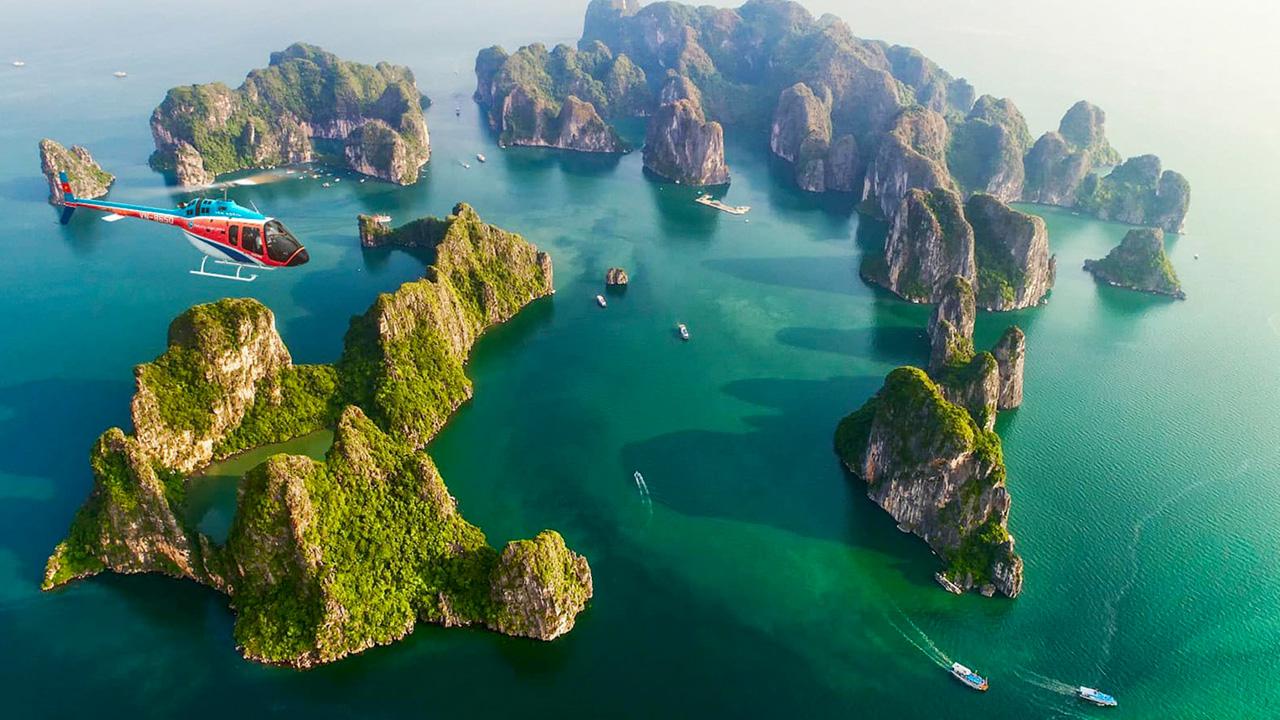
Location and Geography of Ha Long Bay
Ha Long Bay lies within the Gulf of Tonkin, part of the northern Vietnamese province of Quang Ninh. It is approximately 165 kilometers east of the bustling capital of Hanoi, making it an accessible and enticing escape from the urban sprawl. The bay stretches across an expansive area, showcasing a geographical diversity that has been sculpted over millions of years by natural forces.
- Proximity to Major Cities: Its location near Hanoi makes Ha Long Bay not only a preferred getaway for locals but also an essential stop for international tourists exploring Vietnam. This proximity is facilitated by numerous transport options, including expressways and shuttle services that connect travelers swiftly to this natural wonder.
- Geological Formation: The bay’s dramatic landscape is the result of ancient geological processes, involving the uplift of limestone deposits that date back hundreds of millions of years. Marine erosion and tectonic movements have shaped these formations into the unique karsts seen today, some featuring alluring caves and grottoes.
- Climatic Influences: Ha Long Bay experiences a tropical monsoon climate, with distinct wet and dry seasons. The weather patterns significantly affect the scenery and activities available. During the drier months (November to April), the bay offers clear, picturesque views. Conversely, from May to October, the bay becomes shrouded in mist, adding an ethereal quality to the vistas.
Exploring this geographical mosaic unveils a paradise of stone labyrinths and celestial waters, each turn promising a new vista, a new discovery.
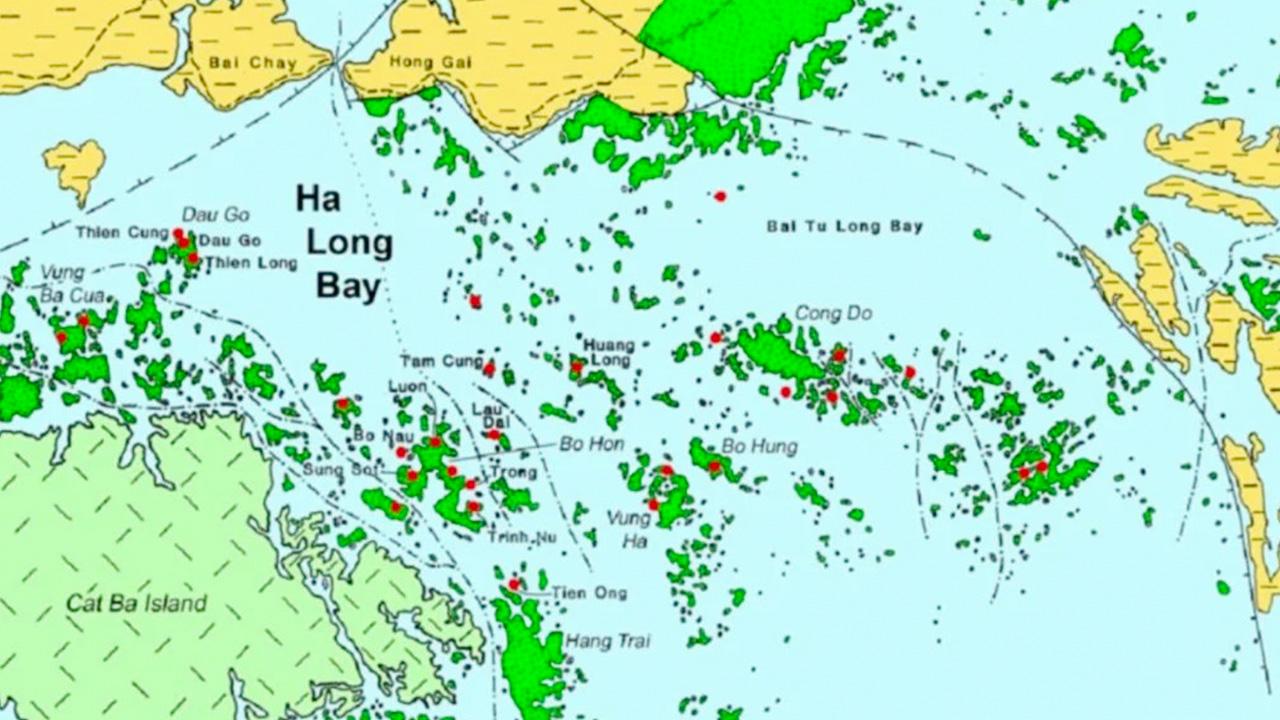
Unique Geological Formations of Ha Long Bay
Ha Long Bay’s landscape is dominated by its limestone karsts, creating an otherworldly tableau that has fascinated geologists and artists alike. These formations date back millions of years and are continuously shaped by the natural elements, contributing significantly to the bay’s mystique and allure.
- Formation Process: The karsts were formed through the gradual dissolution of soluble rocks, primarily limestone, which led to their distinctive shapes. Erosion and weathering further sculpted these formations into pinnacles and cliffs, each with unique characteristics. The combination of these processes has given rise to a natural gallery of shapes, from graceful arches to towering pillars.
- Notable Features: Some karsts have gained fame for resembling recognizable figures, such as the Fighting Cock Island and the Stone Dog Island. These iconic landforms add character to the bay, becoming popular subjects for photography and sightseeing cruises.
- Caves and Grottoes: Numerous caves punctuate the landscape, each a testament to natural artistry. Sung Sot Cave (Surprise Cave), renowned for its impressive stalactites and stalagmites, offers visitors a journey into an underground wonderland. The multicolored lights that illuminate these formations only enhance the ethereal beauty and amplify the cavernous allure.
In Ha Long Bay, the geological narrative is as captivating as it is ancient, providing a backdrop that inspires and enchants.
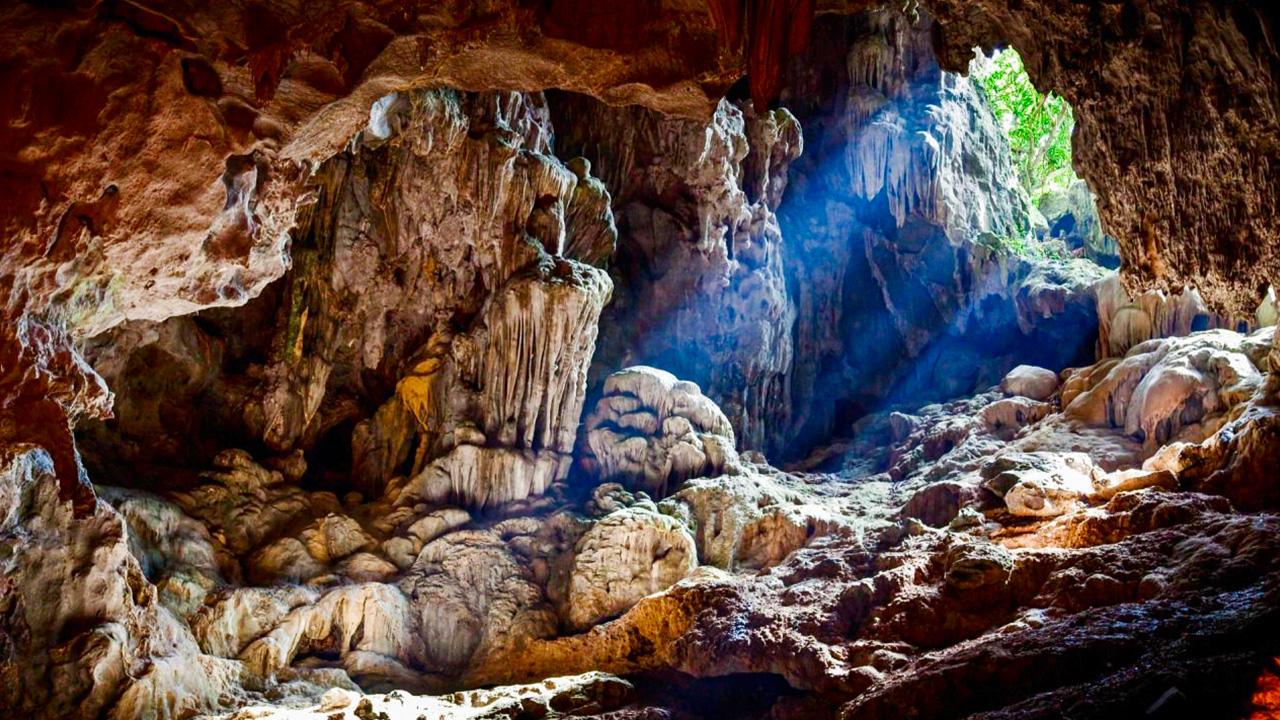
Biodiversity and Ecosystems in Ha Long Bay
Ha Long Bay is not only remarkable for its scenic beauty but also for its rich biodiversity. This diverse ecosystem is home to an array of species, making it an ecological hotspot and a natural treasure trove worthy of conservation.
- Marine Life: The bay supports over 4,622 species, from fish and crustaceans to corals and marine plants. The waters teem with life due to the nutrient-rich conditions, with phytoplankton blooms playing a crucial role in maintaining the marine food web. These blooms provide sustenance for higher trophic levels, thereby sustaining the vibrant aquatic community.
- Interconnected Habitats: The ecosystems within Ha Long Bay are intertwined with adjacent environments like mangroves and seagrass beds, each contributing to the area’s ecological complexity. Mangrove forests serve as nurseries for young fish and shrimp, highlighting their importance as breeding grounds that support marine biodiversity.
- Conservation Challenges: Despite its robust ecosystems, Ha Long Bay faces environmental pressures from human activities and climate change. To preserve its natural wealth, ongoing conservation initiatives focus on habitat protection and sustainable tourism practices. The implementation of these measures ensures that future generations can appreciate its ecological grandeur.
In Ha Long Bay, the serenity of the waters belies the vibrant life it nurtures below the surface, making it a sanctuary of both beauty and biodiversity.
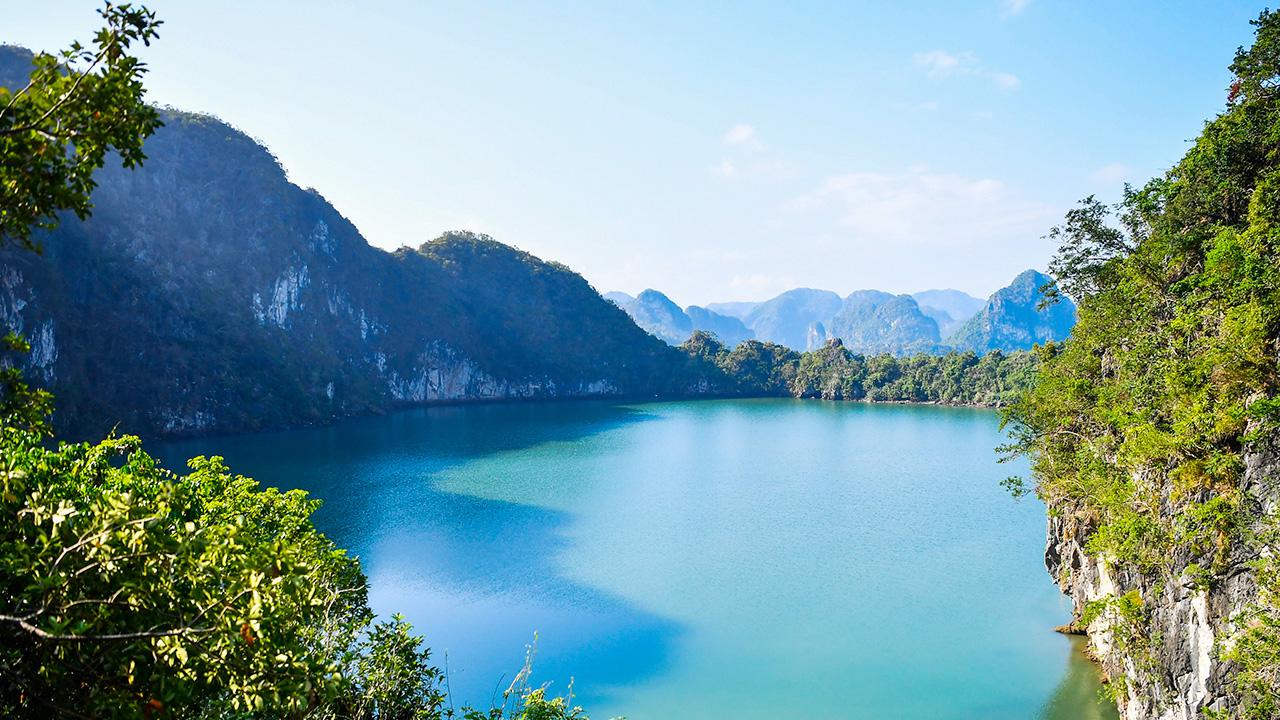
Tourism in Ha Long Bay
As a cornerstone of Vietnam’s tourism landscape, Ha Long Bay attracts millions of visitors each year. Its resplendent beauty and cultural richness offer an irresistible invitation to travelers seeking both adventure and tranquility. From cruising the emerald waters to exploring hidden caves, Ha Long Bay presents a myriad of experiences that cater to various interests and preferences.
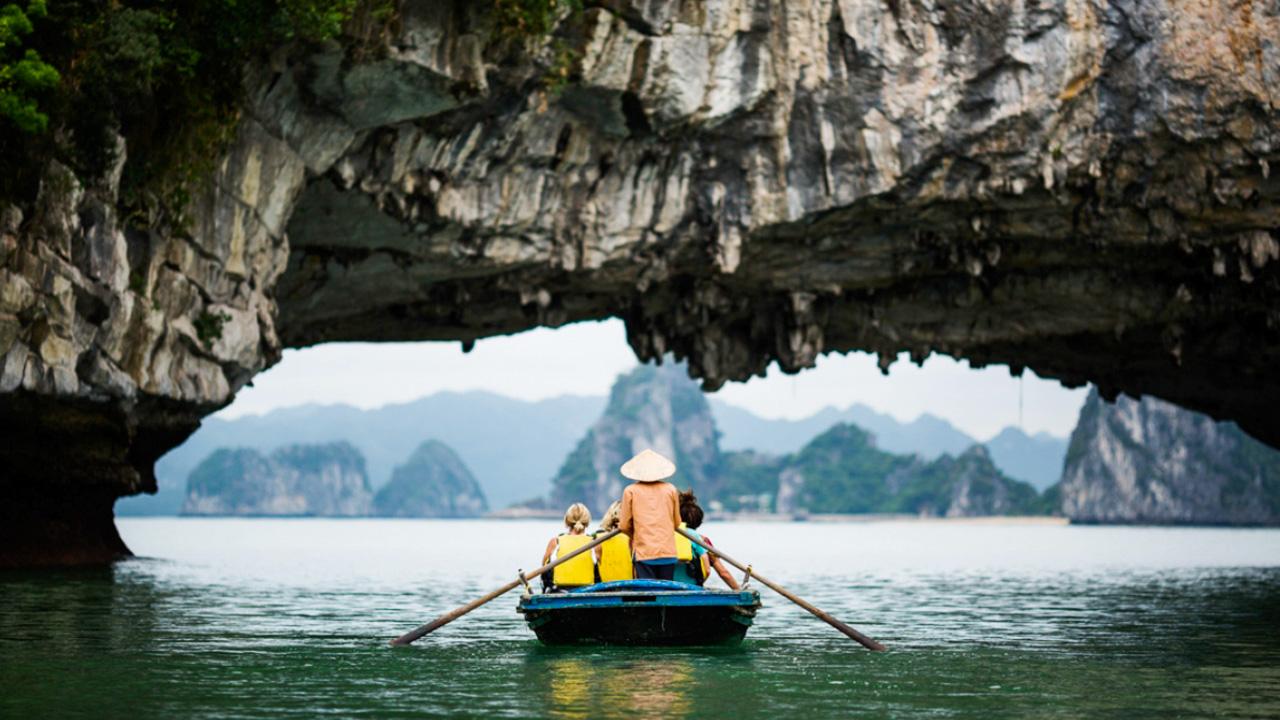
Popular Activities in Ha Long Bay
Ha Long Bay’s ethereal beauty sets the stage for a range of activities that promise unforgettable experiences. From relaxing cruises to adventurous kayaking, the bay offers something for every traveler.
- Cruising: An ideal way to explore Ha Long Bay is by embarking on a cruise. With options ranging from day excursions to multi-day journeys, these cruises provide panoramic views of the limestone formations. Luxurious cruises offer an immersive experience, with onboard amenities and guided tours to notable spots like Sung Sot Cave, Luon Cave, and Ti Top Island.
- Kayaking: For those seeking a closer connection to nature, kayaking offers a unique perspective of Ha Long Bay’s hidden lagoons and secluded beaches. This activity allows visitors to navigate through serene waters at their own pace, discovering tranquil corners of the bay less accessible by larger vessels.
- Floating Villages: Engaging with local culture is an essential part of the Ha Long Bay experience. Visiting places like Cua Van Floating Village immerses tourists in the traditional lifestyles and fishing practices of these resilient communities. Here, interactions with locals offer insights into their unique way of life.
Whether you are savoring the view from a cruise deck or paddling through hidden alcoves, the activities in Ha Long Bay promise a cherished memory of nature’s artistry.
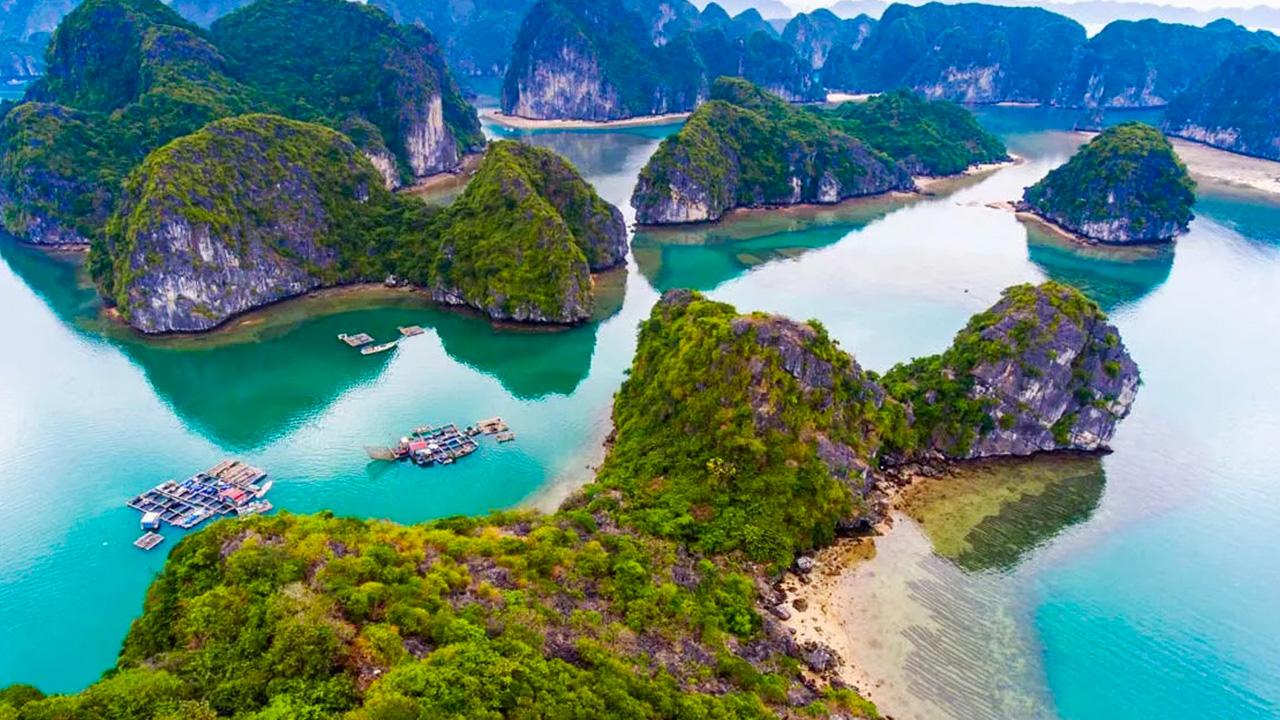
Best Times to Visit Ha Long Bay
Planning a trip to Ha Long Bay requires considering the optimal time for an inspiring visit. The bay’s climate varies, impacting the experience each season offers.
- Spring (March-May): This period offers mild temperatures and clearer skies, making it ideal for outdoor activities like hiking, cruising, and kayaking. The flowering landscapes add vibrancy to the already stunning vistas.
- Autumn (September-November): The autumn months provide the most favorable conditions with fewer tourists, lower humidity, and pleasant weather. This is when the bay’s natural beauty is paired with tranquility, creating a serene environment for exploration.
- Summer (June-August): The summer is marked by higher temperatures and increased rainfall, accompanied by occasional storms. While it is still a favorite time for local visits, your plans might need to cater to sudden weather changes, which could impact outdoor activities.
- Winter (December-February): This season brings chillier air and mist-covered horizons, creating a mystical backdrop though limiting some recreational pursuits. Visitors during this time often describe the picturesque fog as adding a dreamlike quality to the bay’s allure.
Awareness of these seasonal changes ensures travelers can select a time that aligns with their desired experience, each season offering distinct charms of Ha Long Bay.
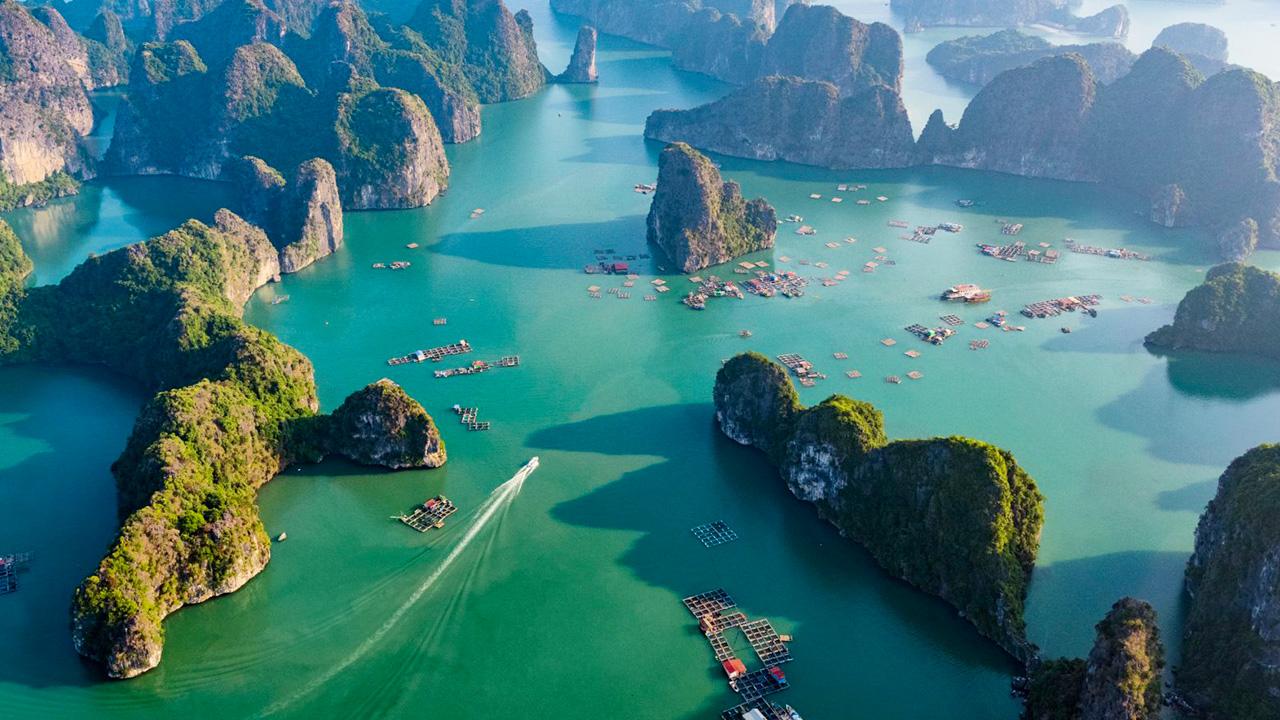
Accommodation Options in Ha Long Bay
Deciding where to stay in Ha Long Bay can greatly enhance your visit, with a plethora of accommodation options available to match every budget and preference.
- Budget-Friendly Options: For economical travelers, Ha Long City provides hostels and guesthouses that are conveniently located. These accommodations offer easy access to local eateries and markets, perfect for those wanting an authentic glimpse into the region’s daily life.
- Cruise Ships: A distinctive option for accommodation is overnight cruises, which allow visitors to wake up surrounded by the bay’s romantic scenery. Most cruises include comfortable cabins, dining experiences, and tours of the bay’s highlights, ensuring an all-encompassing journey amidst the waters.
- Luxury Resorts: For indulgence and relaxation, luxury resorts on the bay’s fringes offer high-end amenities with breathtaking views. Resorts often feature spa services, gourmet dining, and activities like golfing, catering to travelers seeking a more refined experience.
These accommodation choices offer varied experiences, from immersive bay encounters to land-based comforts, allowing visitors to tailor their visit to Ha Long Bay to their personal taste and style.
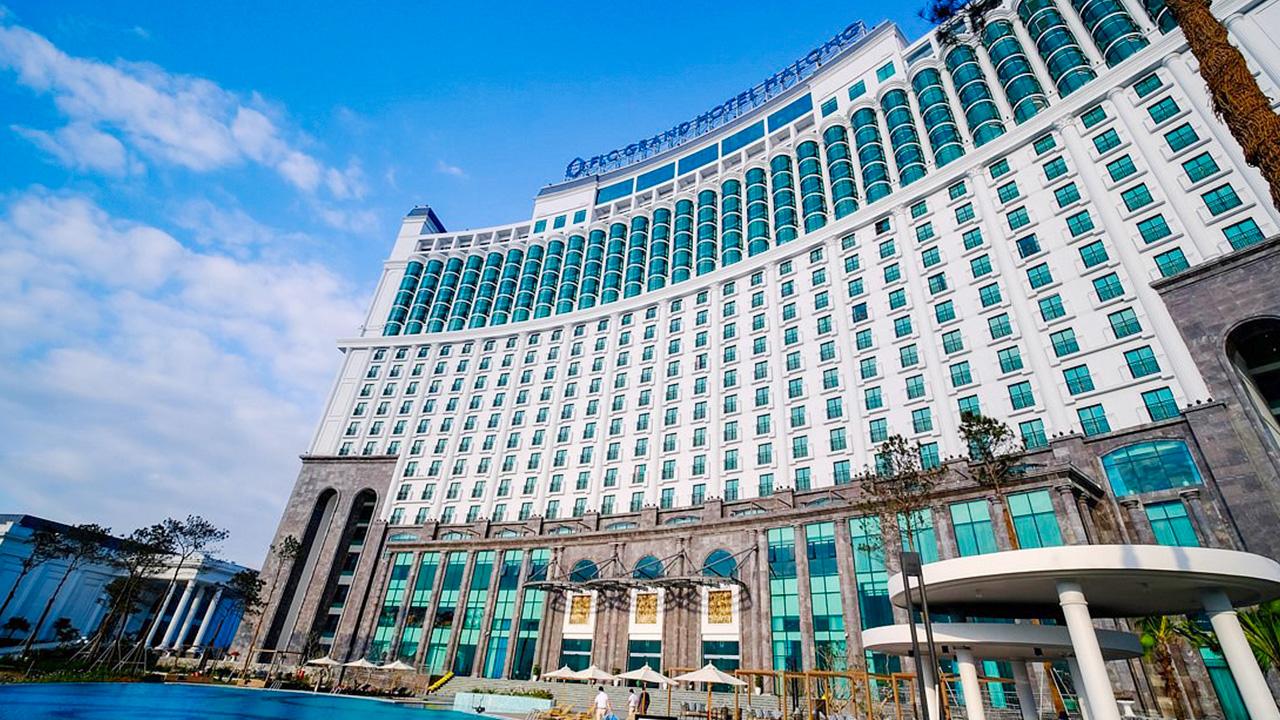
Cultural Significance of Ha Long Bay
Rooted deeply in its landscape, Ha Long Bay carries cultural traditions that have developed alongside its environmental marvels. The bay boasts fishing villages where timeless customs and crafts flourish, linking the present to a rich past. These traditions offer a portal into Vietnam’s diverse cultural tapestry, allowing visitors an authentic taste of local heritage through customs, festivals, and culinary practices.
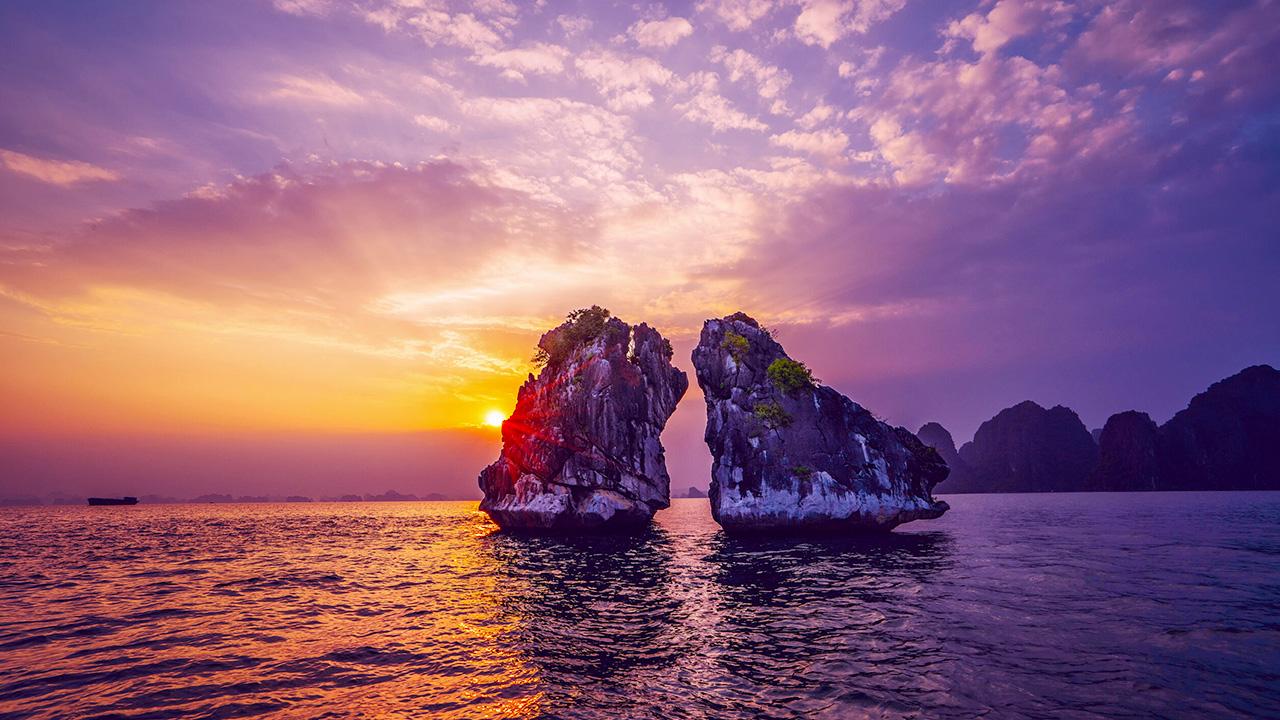
Influence of Ha Long Bay on Local Cuisine
Ha Long Bay’s proximity to rich marine sources profoundly affects its local cuisine, which is heavily centered around seafood. The unique conditions foster the availability of fresh ingredients, inspiring a culinary culture that celebrates oceanic flavors.
- Seafood Staples: Signature dishes include grilled squid patties (cha muc) and mantis shrimp noodles (Bun Be Be), which highlight the bay’s bounty. Markets and eateries abound with fresh catches daily, ensuring visitors a taste of the sea’s wealth in each meal.
- Seasonal Variations: The availability of certain seafood varies with the seasons, allowing chefs to adapt menus and experiment with diverse flavors throughout the year. This variation leads to culinary creativity, resulting in an ever-changing gastronomic experience.
- Culinary Experiences: Attending food festivals offers another avenue to enjoy local cuisine while learning about sustainable fishing practices. These events often showcase traditional cooking demonstrations and seafood tasting, enriching one’s understanding of Ha Long Bay’s culinary traditions.
Local cuisine in Ha Long Bay stands as a testament to the harmonious relationship between the community and their maritime environment, enhancing both cultural heritage and visitor experience.

Environmental Concerns and Conservation
The allure of Ha Long Bay is threatened by environmental issues, primarily arising from over-tourism and pollution. While its natural and cultural attractions draw visitors, the influx exerts pressure on the bay’s delicate ecosystems, necessitating vigilance and proactive conservation strategies. Addressing these concerns is vital to safeguard the region for generations to come, underscoring the balance between human activity and ecological stewardship.
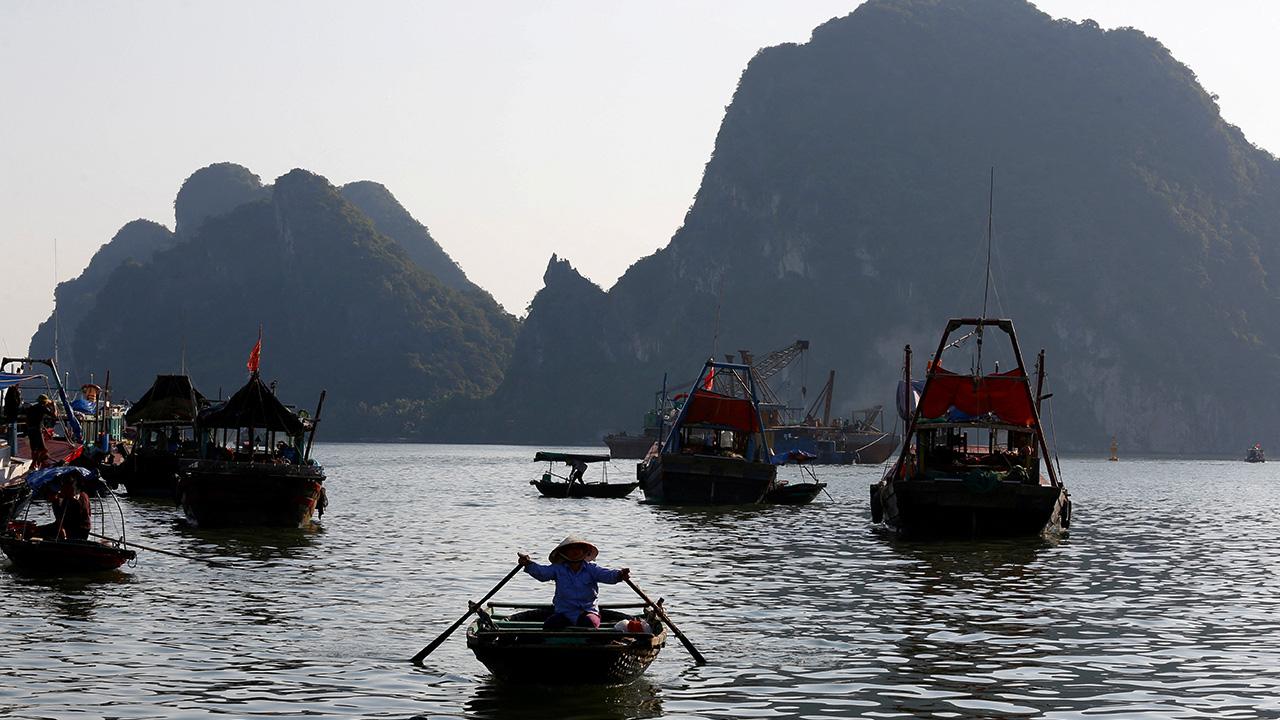
Impact of Tourism on Ha Long Bay Ecosystem
Ha Long Bay’s burgeoning popularity brings both opportunities and challenges to its natural environment, with tourism posing a significant impact on the ecosystem.
- Environmental Stress: The dramatic increase in tourist numbers has led to problems such as water pollution and waste accumulation. Plastic waste has particularly emerged as a visible problem, disrupting marine life and tarnishing the bay’s pristine reputation.
- Overdevelopment: To accommodate the influx, infrastructure expansion such as hotels and facilities encroach on natural habitats, further accelerating environmental degradation. Coral reefs, once thriving, face decline due to pollution and habitat loss.
- Insufficient Management: Inadequate waste management systems mean many pollutants end up in the bay. Local interventions, although gradually reducing some issues, have yet to adequately address the root causes of pollution.
While tourism is a key economic driver, managing its impact without compromising environmental integrity remains crucial for the sustainability of Ha Long Bay.
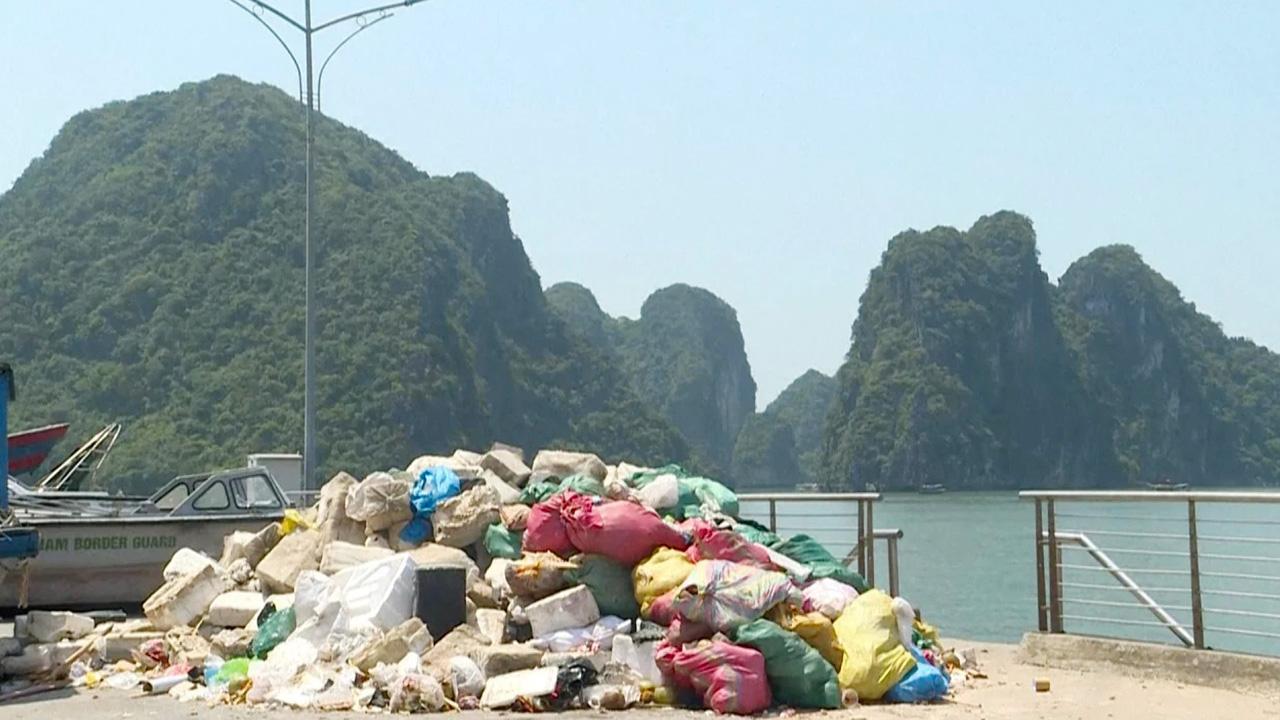
Conservation Efforts in Ha Long Bay
Ensuring Ha Long Bay remains an ecological haven has prompted concerted conservation efforts by various stakeholders focused on sustainable tourism and environmental protection.
- Community Initiatives: Local communities increasingly participate in conservation, leveraging traditional knowledge and cultural practices to promote eco-friendly tourism. Educating tourists about the importance of preserving the bay contributes to more respectful interaction with its delicate environment.
- Regulatory Measures: Authorities have implemented stricter regulations on tourism activities and waste management, aiming to reduce pollution. Limiting plastic use on tourist boats and improving treatment of wastewater are key areas of focus.
- International Collaboration: Partnerships with international conservation organizations help enhance efforts, bringing global expertise and resources to protect this natural wonder. Collaborative projects often focus on marine biodiversity, aiming to restore and sustain the vibrant ecosystems under threat.
These conservation strategies collectively address the challenges Ha Long Bay faces, fostering a harmonious relationship between tourism and ecological preservation essential for its future.

Comparing Ha Long Bay with Other UNESCO Sites
Ha Long Bay stands proudly among global natural wonders recognized by UNESCO, yet it is distinct when compared to other sites like Phong Nha-Kẻ Bàng National Park and Komodo National Park. Each park offers unique attributes that distinguish them within the rich tapestry of the world’s heritage, underscoring the varied experiences available for ecotourists and nature enthusiasts alike.
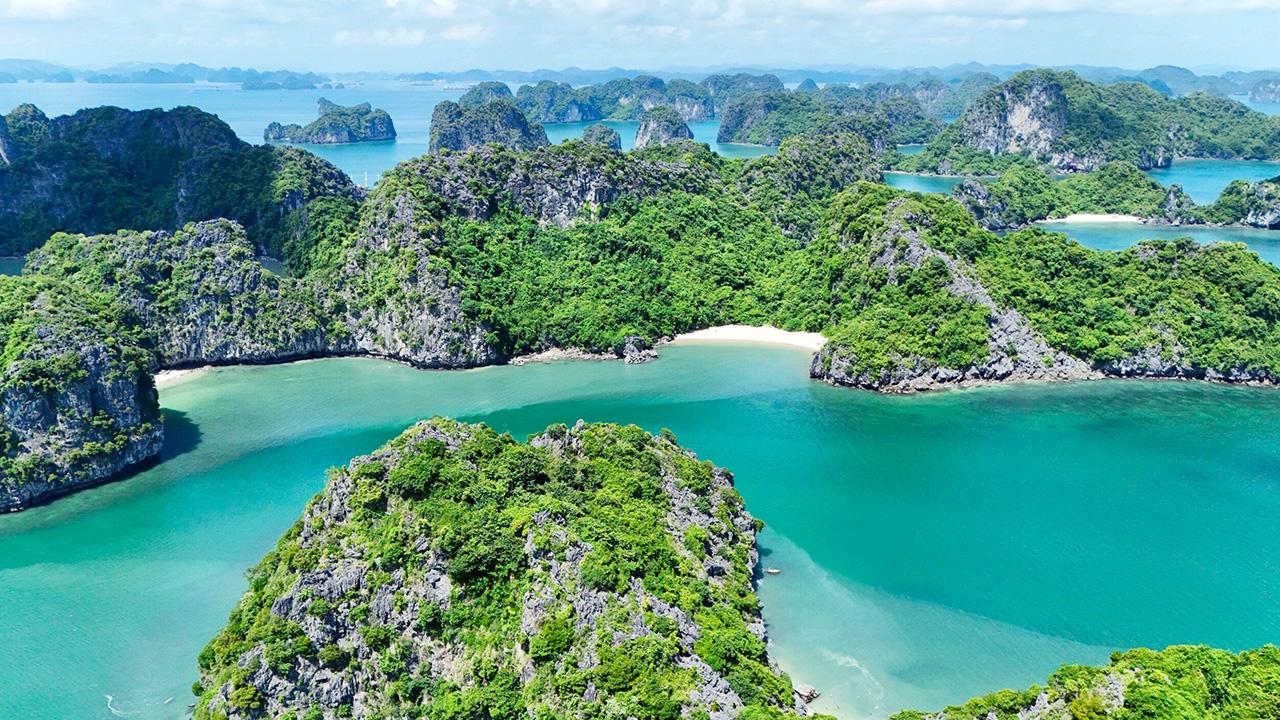
Ha Long Bay vs. Phong Nha-Kẻ Bàng National Park
When it comes to comparing Vietnam’s two UNESCO heritage marvels, Ha Long Bay and Phong Nha-Kẻ Bàng National Park offer diverse reflections of natural and geological grandeur.
- Scenic Differences: Ha Long Bay mesmerizes with its limestone karsts soaring over turquoise waters, creating a picturesque marine landscape that encourages relaxation and reflection. In contrast, Phong Nha-Kẻ Bàng is renowned for its extensive cave systems, including the world’s largest cave, Son Doong. Its allure lies in underground exploration and the insight it grants into ancient geological formations.
- Activities Offered: While Ha Long Bay is associated with leisure cruises and cultural festivals, Phong Nha-Kẻ Bàng offers activities rooted in adventure, such as caving, hiking, and ziplining across lush forests.
- Accessibility and Experience: Ha Long Bay’s location near Hanoi makes it highly accessible for those with limited time, providing a peaceful escape with convenient tourist facilities. Phong Nha-Kẻ Bàng, while more isolated, offers an immersive experience deep into the wilderness, appealing to those seeking less trodden paths.
Both sites embody the majestic beauty of Vietnam’s natural heritage, yet cater to travelers with differing preferences for their encounters with nature.
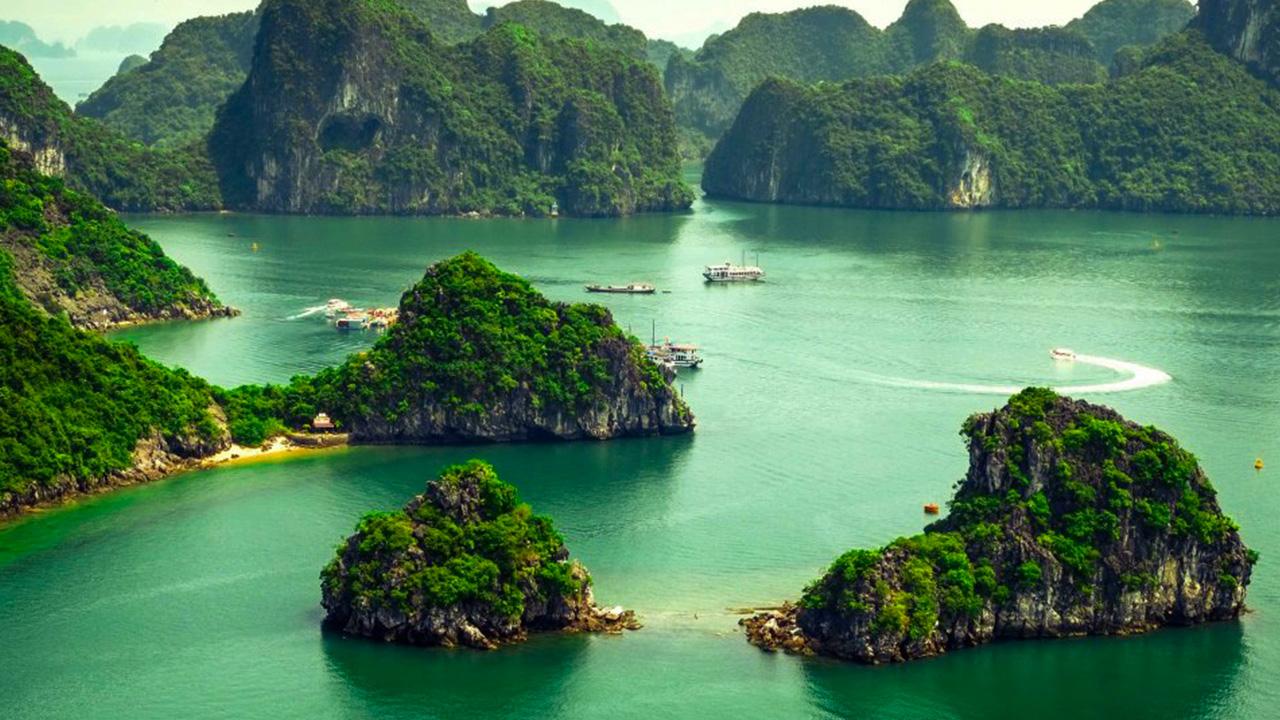
Ha Long Bay vs. Komodo National Park
Ha Long Bay and Komodo National Park are celebrated UNESCO sites, each with distinct ecological and cultural characteristics drawing visitors worldwide.
- Natural Attractions: Ha Long Bay’s limestone islands offer a serene coastal escape, renowned for scenic cruises and hidden lagoons. Komodo National Park, meanwhile, presents a rugged landscape home to the famed Komodo dragons, where volcanic islands harbor diverse ecosystems from lush terrestrial environments to vibrant coral reefs.
- Wildlife and Biodiversity: Where Ha Long Bay thrives on marine life and bird species, Komodo National Park showcases some of the planet’s richest marine biodiversity and unique fauna, such as the largest lizard species, bringing a unique wildlife spectacle.
- Tourism Experiences: Ha Long Bay emphasizes cultural immersion, featuring floating villages and culinary journeys within its serene settings. In contrast, Komodo National Park offers dynamic, adventure-driven experiences such as scuba diving, where explorers encounter extraordinary underwater worlds and diverse marine life.
Both sites exemplify natural wonder and biodiversity but offer uniquely tailored experiences, affirming the diverse allure of UNESCO’s World Heritage designations.
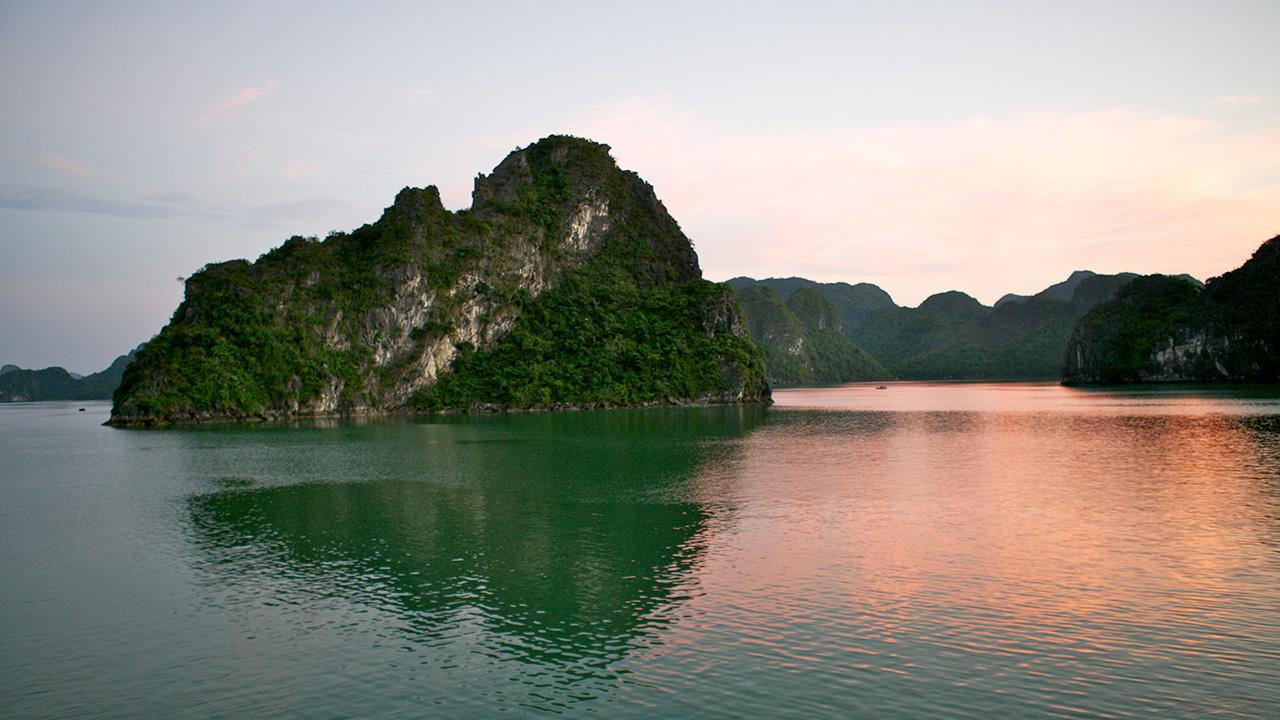
FAQs
- What is the best time to visit Ha Long Bay?
- The best times to visit Ha Long Bay are during spring (March-May) and autumn (September-November) when the weather is clear and pleasant.
- Are overnight cruises available in Ha Long Bay?
- Yes, numerous cruise lines offer overnight packages, providing a unique way to experience the bay’s beauty with luxury accommodations and meals included.
- What ecological challenges does Ha Long Bay face?
- Ha Long Bay faces issues like water pollution, plastic waste, and habitat degradation due to over-tourism and insufficient waste management.
- How does Ha Long Bay influence local cuisine?
- The bay’s rich marine resources heavily influence local cuisine, predominantly featuring seafood dishes like grilled squid patties and mantis shrimp noodles.
- How do I get from Hanoi to Ha Long Bay?
- Travelers can reach Ha Long Bay from Hanoi via bus services, private cars, or shuttle services, which typically take about 3-4 hours.
Key Takeaways
- Ha Long Bay is a UNESCO World Heritage Site renowned for its stunning limestone karsts and diverse ecosystems.
- The bay offers a wealth of activities, from cruising to kayaking and visiting cultural sites like floating villages.
- The ideal times to visit are spring and autumn, considering climate conditions and tourist flow.
- Ha Long Bay’s culinary scene thrives on fresh seafood, a reflection of its marine richness.
- Environmental conservation efforts are crucial to preserving Ha Long Bay’s delicate ecosystems, balancing tourism with ecological responsibility.
Conclusion
Ha Long Bay stands as a testament to Vietnam’s natural splendor, a region where geological magnificence, ecological richness, and cultural history converge into an alluring tapestry. Its towering limestone karsts, vibrant biodiversity, and rich cultural heritage create an immersive experience for any traveler. Despite facing challenges from tourism pressures and environmental threats, Ha Long Bay’s resilience is evident in ongoing conservation efforts aimed at sustainable management. By embracing both its natural allure and community heritage, the bay not only captivates with its beauty but also educates and inspires, promising an unforgettable journey into these serene waters. It remains a pivotal symbol of nature’s grandeur and cultural richness, a jewel in the crown of Vietnam’s expansive landscape.


